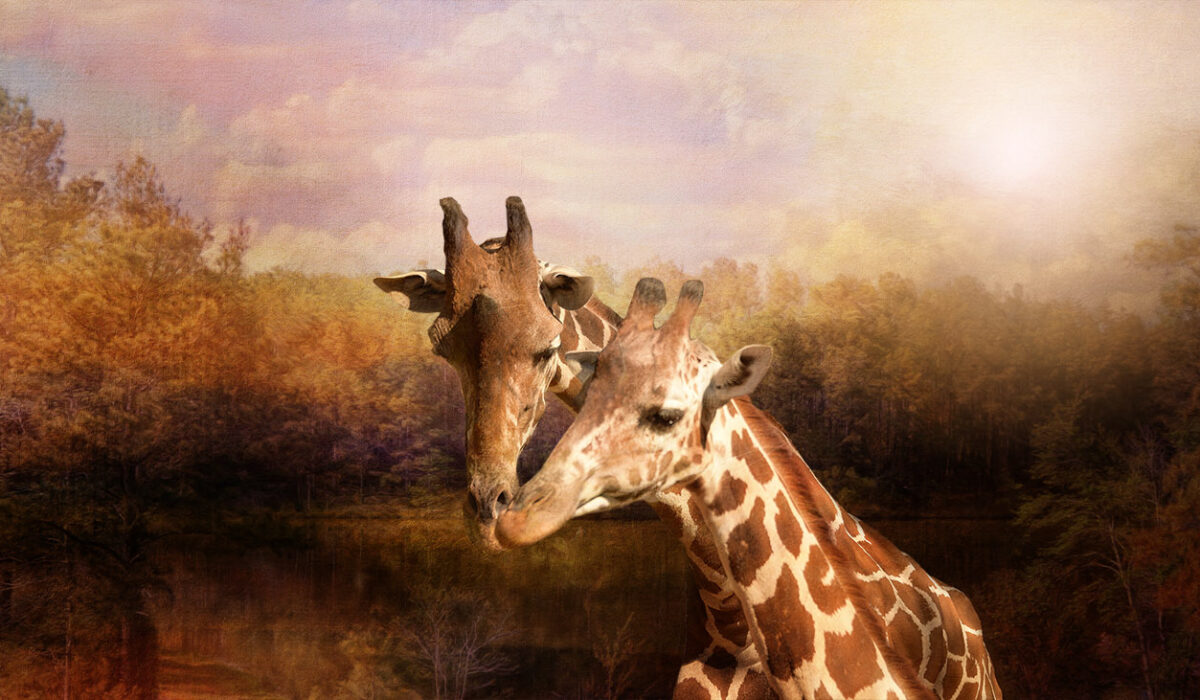— The featured artist of the 97th issue of Living the Photo Artistic Life magazine is Texas-based best-selling author and AWAKE artist Terry Spear. I’m excited to be able to interview Terry here on Quill and Camera . . .
Q: Let’s mix it up. Tell us a bit about how you start your projects.
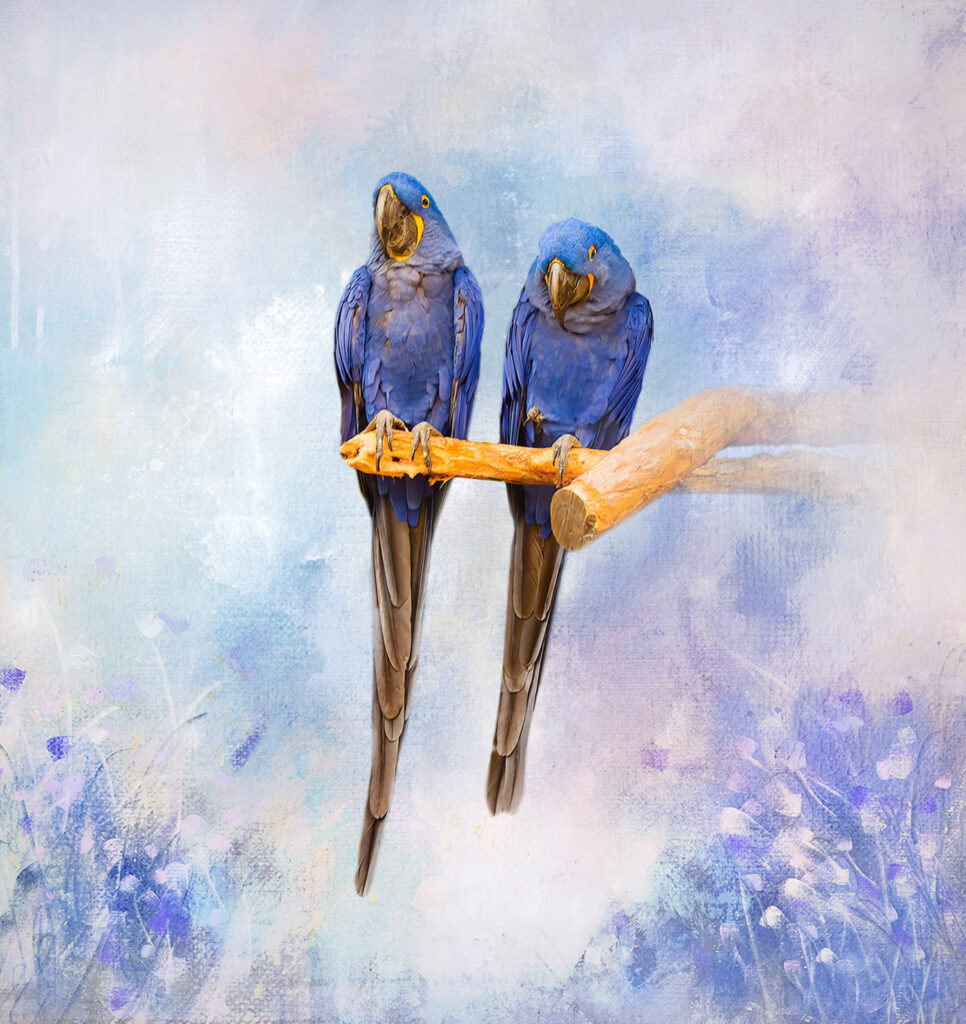
The first thing I do is look for a clear photo of my subject that is interesting in some way, though if it’s a little soft, I use Topaz Studio to add a little more sharpness. I love photographing animals — colorful macaws, a tiger on the prowl (or looking at me cross-eyed), an injured eagle recovering at a wildlife reserve spreading its wings, a rhino charging me, giraffes nuzzling each other, birds on the feeders, or maybe wolves play-fighting. I also love photographing butterflies, dragonflies, ladybugs, little green tree frogs, anoles (chameleons), and flowers.
Sometimes I can shoot a photo with a naturally beautiful background with bubbly bokeh or a creamy look to it already, but most of the time, especially at zoos, the animals have distracting settings. So then I begin by extracting the main subject and adding a texture background. That becomes the beginning of creating photo art and with that in place I am usually sold on it. All of a sudden, my subjects take center stage.
Q: After you have your main subject how does your process typically unfold?
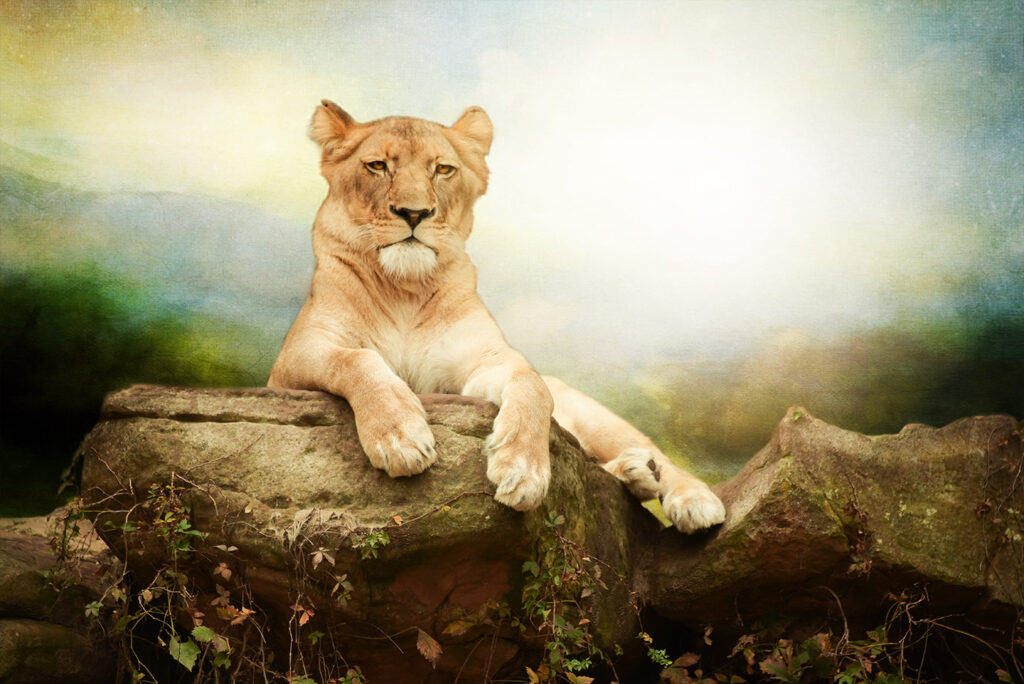
Once I mask out a subject, it’s like a blank piece of canvas underneath the subject until I place layers of textures under it and see what works best with it based on color and texture. Sometimes, I’ll find a texture that needs to have a different color to really show off the subject so I use Hue/Saturation and Color Balance Adjustments Layers to make it fit in better with the subject. I don’t want the subject to blend with the background. I want it to “fit” but not disappear. So it’s a juggling act. I also will add texture layers on top if it needs it, most often with Soft Light or Overlay blend modes, sometimes Hard Light, but I’ll often go through all of them to find the one that looks the best.
As I add layers I’ll just keep turning them on and off, trying blend modes, adding more layers until I find the ones I want to keep, and remove the rest.
Sometimes, I’ll partly mask away something I’ve blended over the subject. Or I’ll use the Mixer Brush to soften the fur on the edges of my animals after masking them.
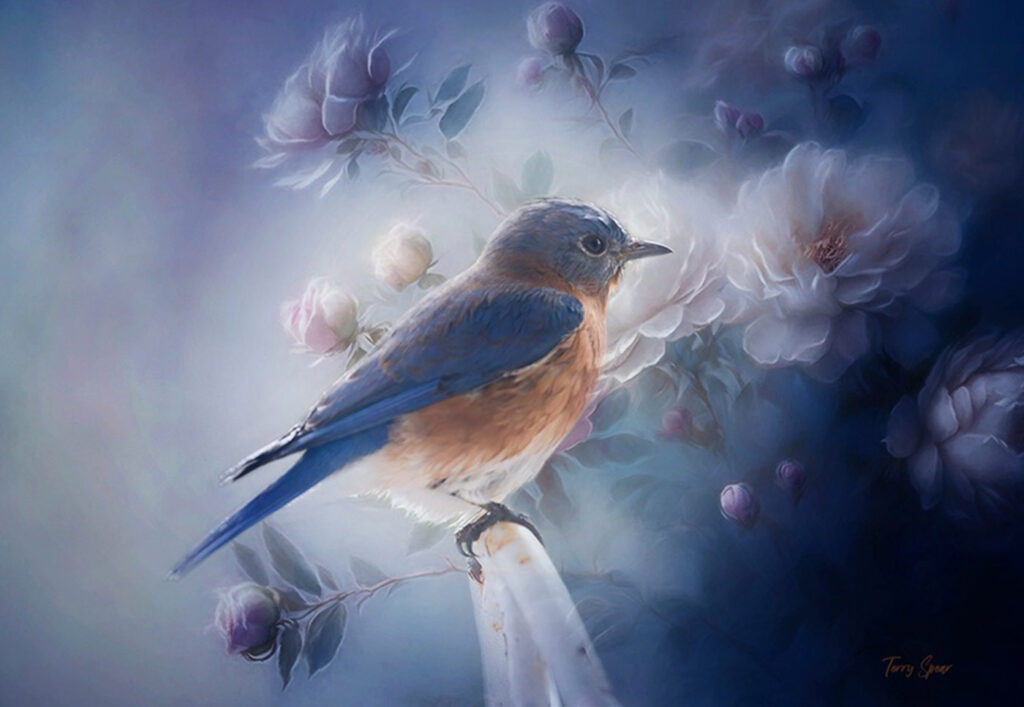
I also work on the main subject further of course — removing flies off bison, a mosquito at the corner of a wolf’s eye, patching up bare spots with fur, replacing body parts that didn’t show up well with another photo of the same subject.
One of my macaw’s tails was covered by a blurry tree branch once and it was the focal point instead of the macaw. So I added a tail from another photo and blended it in until it looked like the original bird. I did the same with a chickadee. One foot was fine, the other was too blurred and hardly visible, so I brought in another photo of it and replaced the one foot. Until I learned Photoshop, I never considered being able to “fix” photos that way.
Q: What inspires you as an artist?
The work I see other artists producing. Something captures my eye and I think, “Oh, how cool is that!” And then I want to try that too. So I’m off trying a new technique like painting with the Mixer Brush or the History Brush Tool, or I’m combining photos I’ve taken in some new way to create something new. I absolutely love trying different techniques to obtain unique results.
Q: What’s your next step as an artist?
I’m eclectic in everything I do — in my writing, reading, photography, and artwork.
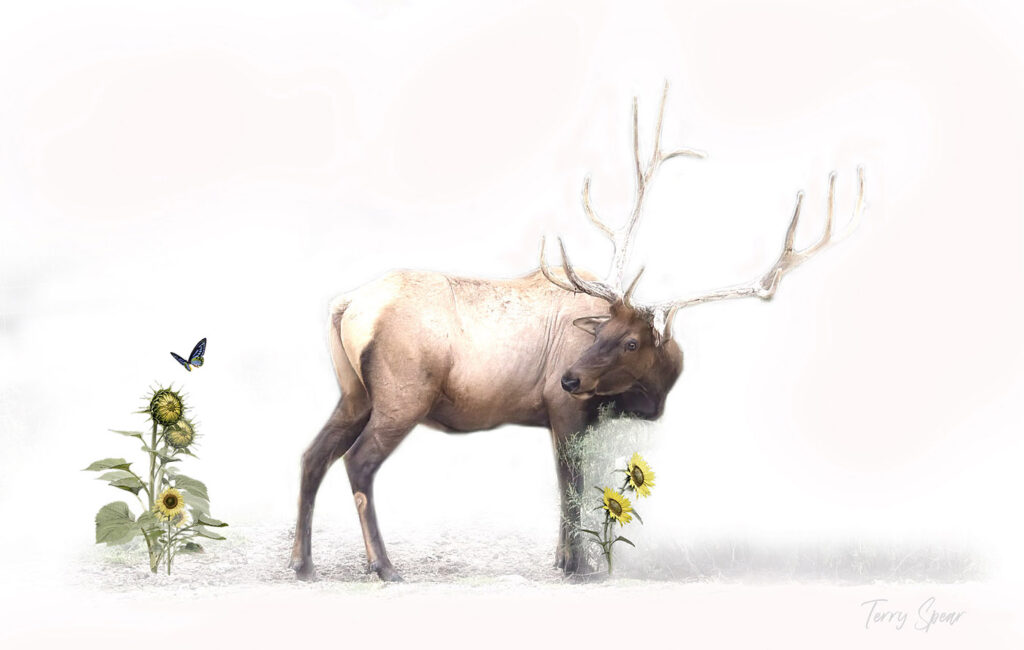
Some artists do such a beautiful job focusing on one form of art, and sometimes I think if I stuck to one kind I’d become a master of my trade. [Laughing.] But truthfully, I love trying new things all the time. So I suppose that’s what I will do next as an artist: keep trying new things!
I get bored if I stick to one kind of art. It’s the same with my writing: I write Highland Medieval romance, shifter romances, YA paranormal romances, romantic suspense . . . And it’s the same with what I turn to in my photography: a bicycle in the woods, no rider around; a pair of guy’s swimming trunks hanging from a branch by a waterfall, the swimmer missing; bicycles on top of a roof as if a tornado had neatly dropped them there; little boys’ shoes and socks by the pond, the boys long gone — or anything else that is fun and different.
I need that challenge of doing something new. Maybe one day I’ll find my total niche and I will stick with it. Probably not though. I truly am eclectic at heart.
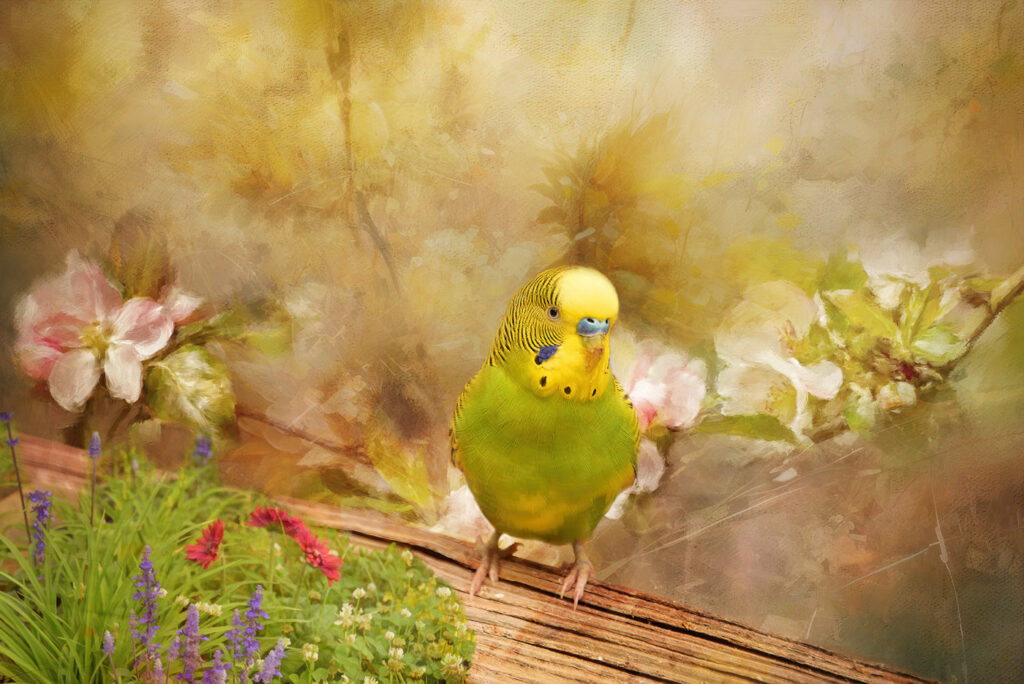
As for where I might want to take my artistic work next . . . I really, really, really want to learn how to work better with hair and fur. I create some of the book covers for my books and I would love to be able to have hair that flows in the breeze. I also write shifter book series, which means adding bears, wolves, cougars, and jaguars to the covers, so again, being able to add artistic fur would help. I employ Mixer Brush painting techniques in those pieces, but I still need to learn how to achieve better results. So I suppose that’s my next step as an artist!
Q: Any suggestions or advice for aspiring artists?
Take the courses, try new techniques (you never know when one could become your absolute favorite), and practice, practice, practice.
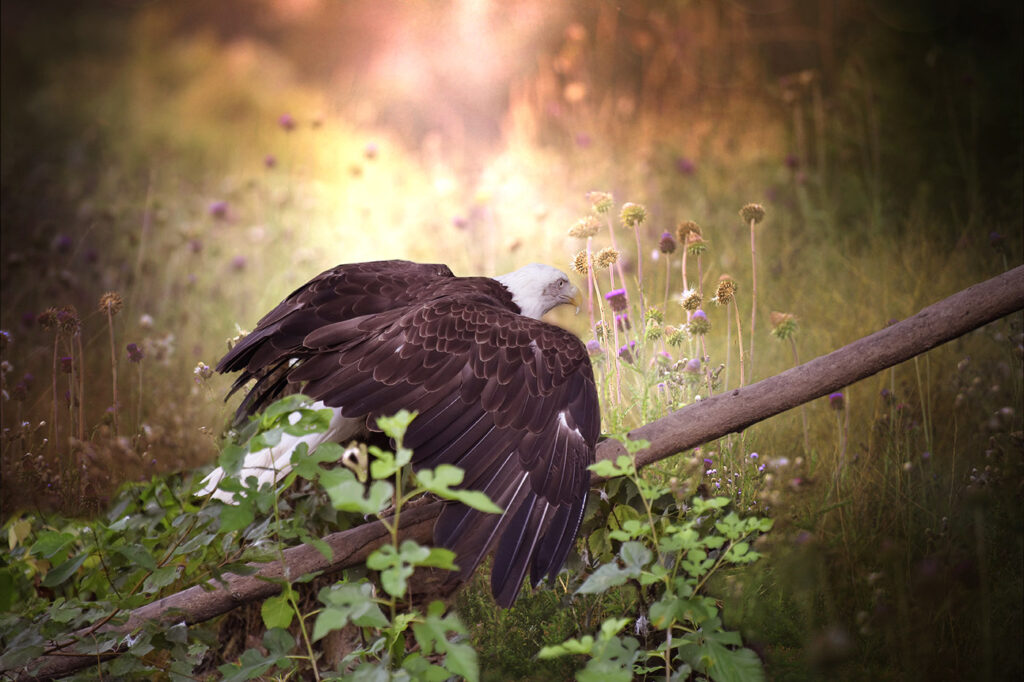
You should always be practicing. And the opportunities are endless if you look for them. Some of my readers send me photos of their pets and I practice on them.
Capturing your own photos can be a challenge, but that’s part of photo artistry. To be able to take photos of your own and create something artistic from them — it’s not easy. You have to work at it.
I write stories, make hand-crafted bears, capture photographs, and create digital art . . . and becoming skilled in each of these takes practice. With any craft, it all becomes so much better as you put in the time and practice.
As we are told in Galaxy Quest, “Never give up, never surrender!”
That of course doesn’t mean that if I have a photo and nothing seems to be working for it, I just keep struggling with it. For instance I have a really fun picture of two Muscovy ducks looking down at us as we were walking under a tree, and I just haven’t figured out what to do with it yet. So I put it aside for another day and I’ll wait until I come up with an idea. But I don’t stop creating. Instead I find another photo to play with and I get busy on another piece. I keep going.
And to me that is the key.
.

